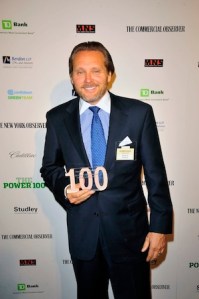By the Numbers: Robert Knakal and the Statistics Behind his Success
By Daniel Geiger February 27, 2012 9:30 am
reprintsRobert Knakal has long had a simple philosophy about selling real estate.
The way he sees it, there are approximately a million buildings in the city, and the broker that gets to sell any one among the multitude that will hit the auctioning block at a given moment is, sometimes, simply the person who happens to pitch their services to the right seller at the right time.
 To that end, Mr. Knakal figures he can either call you, or you can call him.
To that end, Mr. Knakal figures he can either call you, or you can call him.
“During the early 1990s, after the recession and when the market was dismal, we used to have a contest to see who could get to 40 owners a day,” Mr. Knakal recalled earlier this month.
“Even if that person hung up in your face.”
Although it’s one of the biggest and most lucrative markets in the world, Manhattan’s real estate industry is famously close-knit. But for those who break into the club, assignments from clients and attention from the real estate press usually follows.
Still, few in the city’s commercial real estate industry have risen to Mr. Knakal’s prominence, and fewer still have labored as hard to do get there.
In what was once considered a novelty, Mr. Knakal, now a governor on the board of the Real Estate Board of New York and a columnist for The Commercial Observer, first garnered attention as a young broker by tracking real estate sales figures in the early 1980s—well before such careful analyses became commonplace at real estate firms.
Since then, he and partner Paul Massey, with whom he founded the brokerage firm Massey Knakal in 1984, have escalated the technical practice of data gathering and showcased ever more sophisticated skills.
In recent years, Massey Knakal has held regular quarterly breakfasts that showcase the blitz of detailed statistics and market measures it tracks. Even in an industry now brimming with data, the firm’s numbers stand out by virtue of the fact that it sells a higher volume of transactions than many of its rivals combined, meaning it can aggregate more data. And at the company, save for perhaps Mr. Massey, no one wields that data better than Mr. Knakal, using it as a tool for prognostications about the market.
“I’ve always been sort of a wonk with statistics,” Mr. Knakal said, modestly.


